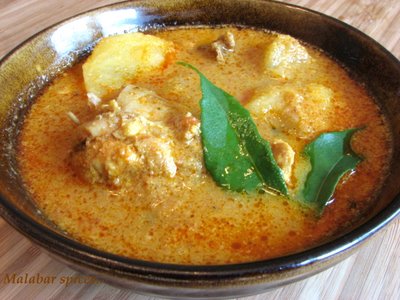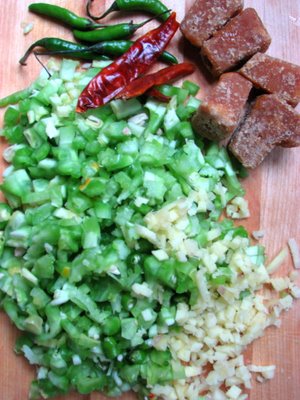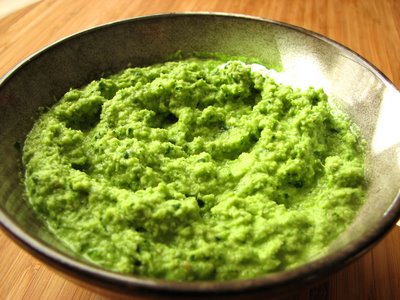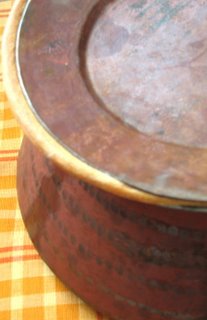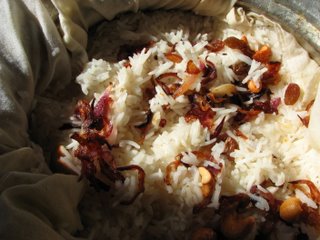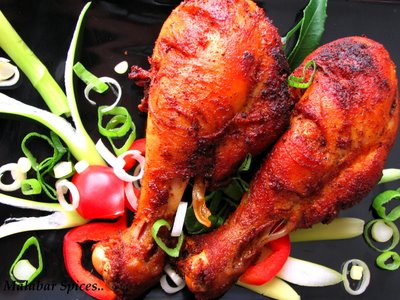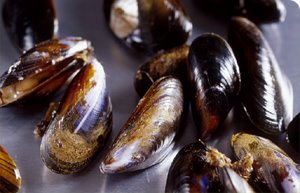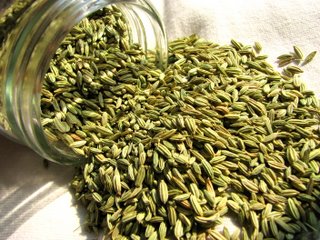
When Vineela declared Milk as this month's theme for Jihva for Ingredients, I knew what I wanted to post right away.
Falooda, the refreshing drink/dessert made by layering the contrasting tastes and textures of noodles, milk, jelly, fresh fruits, icecream, takamaria seeds, crushed nuts etc is a wonderful summer delight. Quite like the American tradition of a sundae.
Falooda, is also the commonly known in North India as the thin transparent noodles which are usually colorless, flavorless and chewy, used to top the kulfi and falooda drink in Delhi. It is Iranian in origin, but is very integral to India now.
It varies in taste across the span of the country, in keeping with the local flavors and preferences. The popular flavors in which falooda are available are rose, pista, mango, chocolate, fig, and many others. One of the best faloodas tasted, is from a place in Chandni Chowk, Delhi, near Paratha wali gali. It was a rabdi falooda, rabdi being milk cooked and reduced to a grainy, thick consistency and then sweetened with sugar. It was decadent enough to linger in memory.
During my childhood, my personal favorite was the falooda from the Park Restaurant at Manachira Tank in Calicut, Kerala. In later visits, as Park restaurant closed, my loyalty shifted to a small place called Kalanthans in S.M.Street. The fruit was fresh, the jelly firm, the ice cream excellent and one of my Uncle’s friends owns it. In my recent trips to Calicut, we still seek out and sample falooda from whichever is the current favorite haunt.
However, I could not quite place it, but something was different. It didn’t match up to our finicky memories. That’s when we started experimenting and creating our own rendition of the taste.
The characteristic taste is the slipperiness of the takmaria seeds and the noodles, both unusual ingredients. Takmaria is the seed of Basil plant, and when soaked in water swells up to a gelatinous mass of bubbles. The thin noodles is made from corn flour. I have tried making it, unsuccessfully and now just prefer to buy it from the Indian store. A close substitute is the Rice cellophane noodles available at all Asian supermarkets.
The rose syrup at the bottom is usually Roof Asfa, a rose concentrate available at any Indian store.
A dash of strawberry syrup is also good if the former is unavailable.The mango brings out the tropical flavor the best, but this time, it’s a rose theme, so the rose essence is offset by the fresh strawberries. As for the ice cream, the Indian store’s flavours work very well, especially the Rose or the Kesar Pista.

You will need ( 4 servings)
Takmaria/Subja Seeds (basil) seeds -2tsp
Falooda sev or Rice noodles-8 ounces
Milk- 1 1/2 cup cold, mixed with 2 tbsp sugar.
Rooafzah syrup- 1 tbsp in each glass.
Ice Cream-1 quart (Vanilla/ Kesar, Falooda)
Honey Roasted Cashewnuts-1/2 cup
Fresh Fruits- Apple, Banana, Mangoes, Strawberries.
Strawberry Jell-O- 3 ounce packet.( Can use Lime Jello too for added color)
Preparation:
1. Make the Jello as per the packet instructions and allow it to set fully. Cut the jello into tiny cubes. Soak the falooda seeds in water for at least 1 hour. They look like poppy seeds and swell up when soaked. Set aside.
2. Boil 1 1/2 cup water and add the noodles or falooda sev. Cook for 4 minutes and take it of the flame. Add ½ cup cold water to set the cooking and let it stay in water till use.
3. Cut the strawberries, bananas, apples and mangoes into very small pieces. Fold the cashews between a paper towel and crush with a glass into pieces. Take care not to crush completely.
4. Use 4 ounce tall glasses for serving. No stirring is to be done while compiling the dessert. Start by drizzling a tablespoon (approx.) of the rose syrup at the bottom of the glass. Lyer 2 tablespoon of the noodles, then ¼ cup milk, then 1 tsp of each fruit and 2 tsp of cut up jello. Add 2 tbsp of vanilla and 2tbsp of rose/strawberry ice cream. Top with crushed nuts.
The quantities of each are relative to the size of the serving glass, so change accordingly. It can be prepared ahead and set out, adding the milk, nuts and ice cream only at the time of serving.
The only other falooda I found was Ashwini's from Food For Thought. If you come across any more, I would be happy to add the link.
Icecream Drinks,Indian Desserts,Rose Falooda,Malabar Recipes


